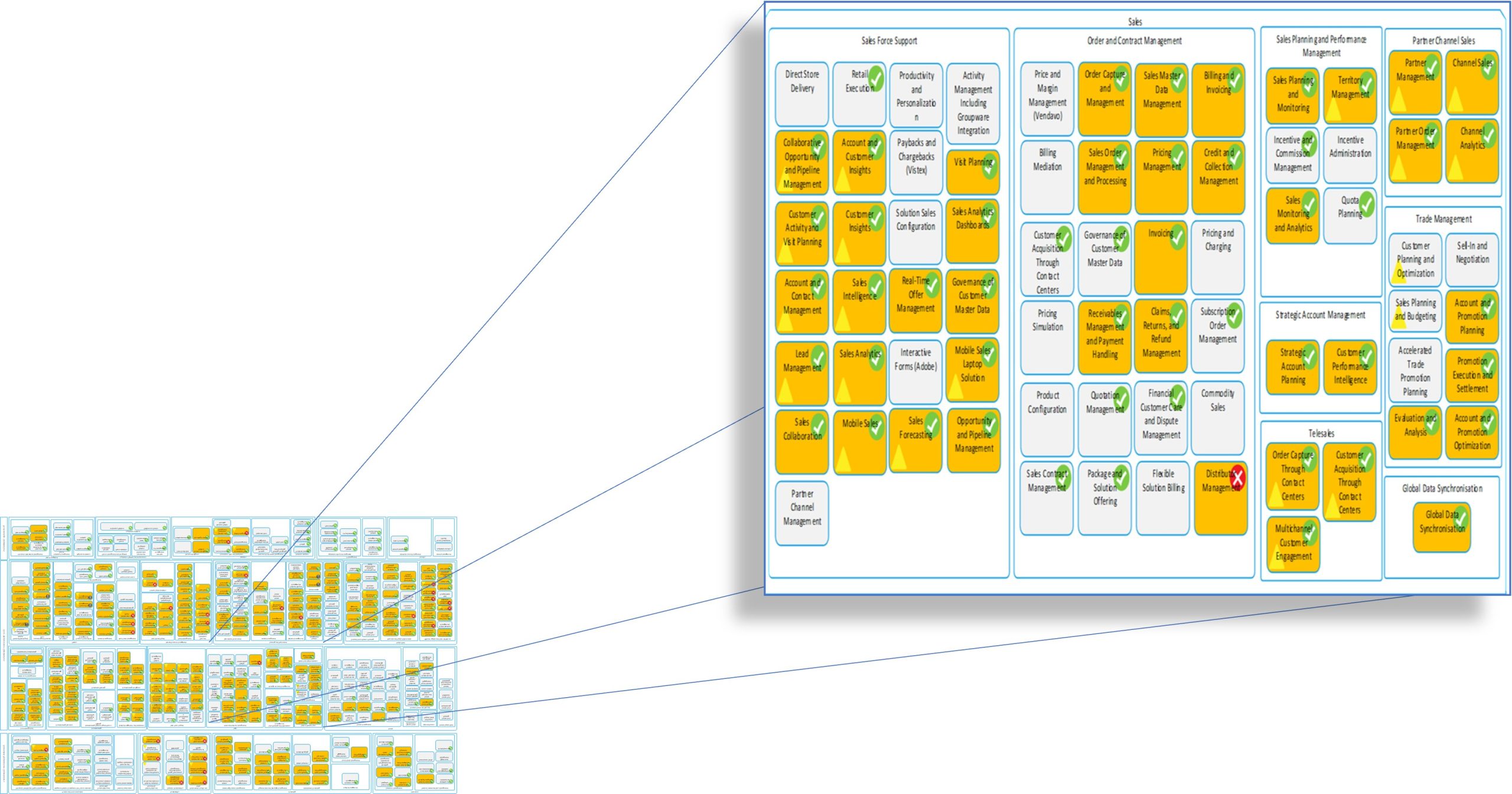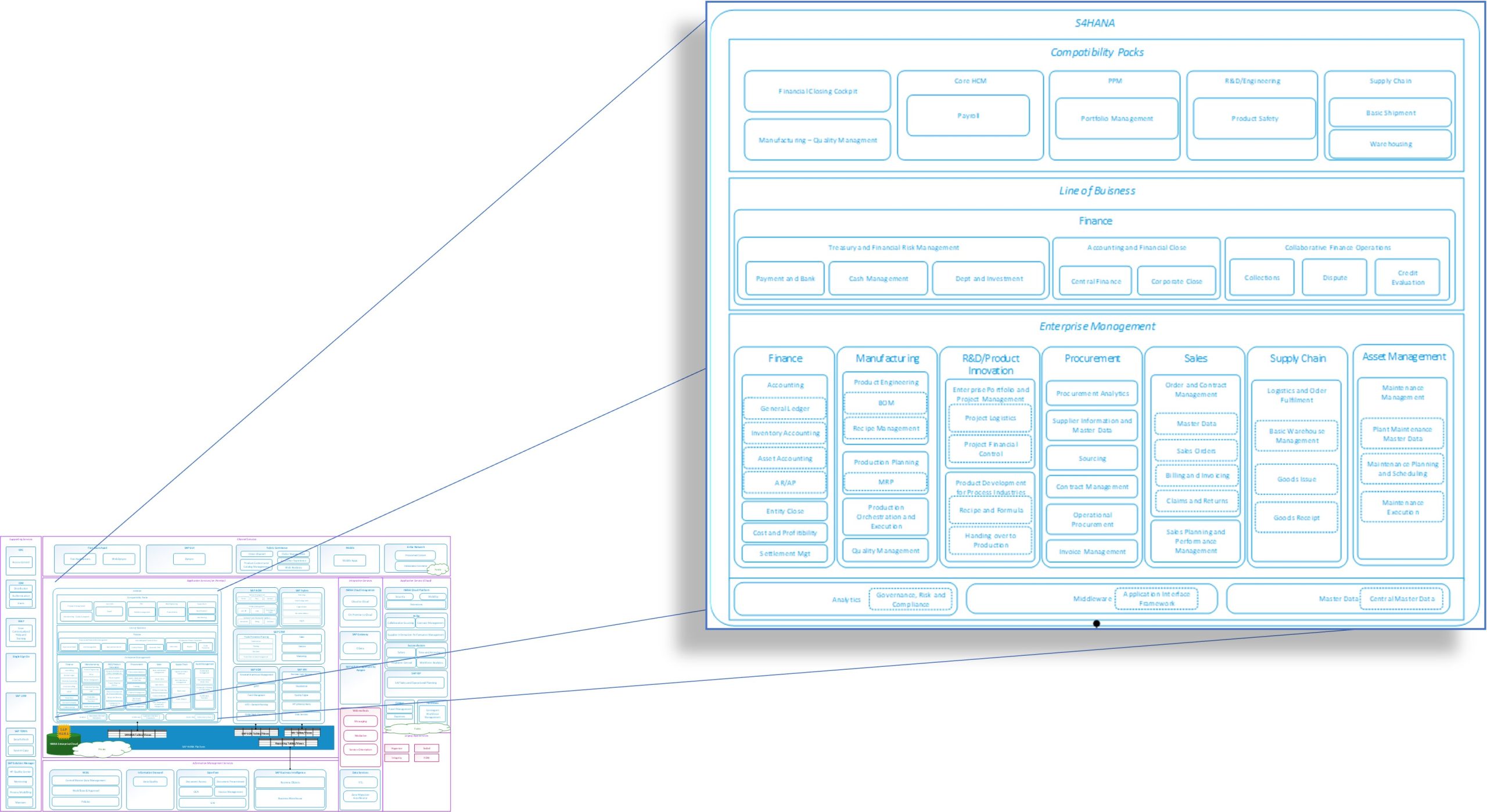
- SAP Community
- Groups
- Interest Groups
- Enterprise Architecture
- Blog Posts
- Business Transformation: Core Areas of Transformat...
Enterprise Architecture Blog Posts
Need a little more room to share your thoughts with the community? Post a blog in the SAP Enterprise Architecture group to explain the more complex topics.
Turn on suggestions
Auto-suggest helps you quickly narrow down your search results by suggesting possible matches as you type.
Showing results for
Associate
Options
- Subscribe to RSS Feed
- Mark as New
- Mark as Read
- Bookmark
- Subscribe
- Printer Friendly Page
- Report Inappropriate Content
06-12-2023
9:12 AM
The previous blog focused more on the core dimensions that are fundamental to business transformation. Just to recap, business transformation is driven by four core dimensions namely vision and strategy, business model, enabling technology and value management. Each dimension feeds into the next one and can potentially have their own iterations of analysis, review and re invention. Now that you have a better understanding of the core dimensions let’s try to understand the key components of a business transformation methodology that are key to any transformation journey.
In this blog, I will aim to provide an insight into the core areas which are impacted during a transformation. As described in my previous blog the vision and strategy are a key input to a transformation journey.
COVID-19 has taught us that business transformation is not always a choice. It is sometimes forced by factors which are beyond the control of the organisation. As a result, industries need to reinvent themselves, whether it was reducing face to face interactions, digitising processes to enable a self-service model or inventing new business models. A noticeable transformation was seen across various industries like automotive, retail, utilities and even governments. The organisations that were quick to embrace the change were able to move more swiftly than others. Which brings me to my first focus area – PEOPLE.
The success of any transformation heavily relies on the people who are directly or indirectly impacted because of the transformation. It is not only the change management that needs consideration business transformation journey goes wider than that. Transformation journeys can be made more holistic by charting out ‘day in the life of’. Day in the life of as a concept aims to describe a typical day in the life of an end user (an employee, a customer, a vendor, or any other persona) impacted during the transformation. The process starts with identification of a user persona, or a user group followed by user interviews or user shadowing to understand what a typical day for them looks like. Using this approach does not only allow for capturing the processes associated with the persona but also helps in identifying opportunities to simplify the experience using the latest technology innovations. In addition to the above, the BTS team also provides a service using Deep Transformation Insights to gauge people experience throughout the transformation journey
Business transformation requires re-imagining the way an organisation conducts its business. It requires an assessment of the current business model and the underlying business processes. The assessment could focus on business priorities, identifying the strengths and improvement opportunities. The output of this exercise can be effectively captured through business capability heat maps. Heat maps are great visual representations of focus areas. Once the focus areas are identified we start working on developing a business-oriented roadmap aimed at delivering value in short term midterm and long-term horizons. However, before diving into the capability model it is critical to validate the organisation strategy, if required, even ideate, and implement new business models. The delivery of value will be enabled by technology.
The third piece in this puzzle is technology. There was a time when businesses were strongly motivated to move their processes on a single platform. The technology at the time had its limitations attributed mainly to high on-premises infrastructure costs, incompatibility of applications causing integration issues and ending up with a landscape which was more complicated than building the death star. With cloud almost all these challenges could be addressed relatively easily. Hence, we are once again seeing a rise in line of business (LoB) specific solutions either from the same software provider or a mix of providers. The long-standing architecture guiding principle “Reduce technology diversity” still holds true. Technology decisions need to take into consideration not only costs of ownership but also business value. In addition, there needs to be special emphasis on cyber security to ensure safety of confidential data against cyber-attacks.
It is a time-tested fact that successful projects ride on strong governance framework. Architecture Governance ensures clear understanding of the various roles, their responsibilities, and their interdependencies. Architecture governance provides a structure which will guide the transformation based on the planned objectives and how the performance will be measured. It will provide an oversight for each phase in the transformation journey. Governance becomes instrumental to make architectural decisions, effectively manage scope, ensure the robustness of the solution and timely identification and management of risks. It is critical that the processes associated to governance and risk management are embedded within each phase of transformation. The approach can be tailored for each phase considering the roles, objectives and final outcome of each phase.
In my next blog we will focus more on some of the Architecture focused Advisory Services that SAP provides through every phase of transformation.
In this blog, I will aim to provide an insight into the core areas which are impacted during a transformation. As described in my previous blog the vision and strategy are a key input to a transformation journey.
COVID-19 has taught us that business transformation is not always a choice. It is sometimes forced by factors which are beyond the control of the organisation. As a result, industries need to reinvent themselves, whether it was reducing face to face interactions, digitising processes to enable a self-service model or inventing new business models. A noticeable transformation was seen across various industries like automotive, retail, utilities and even governments. The organisations that were quick to embrace the change were able to move more swiftly than others. Which brings me to my first focus area – PEOPLE.
- People
The success of any transformation heavily relies on the people who are directly or indirectly impacted because of the transformation. It is not only the change management that needs consideration business transformation journey goes wider than that. Transformation journeys can be made more holistic by charting out ‘day in the life of’. Day in the life of as a concept aims to describe a typical day in the life of an end user (an employee, a customer, a vendor, or any other persona) impacted during the transformation. The process starts with identification of a user persona, or a user group followed by user interviews or user shadowing to understand what a typical day for them looks like. Using this approach does not only allow for capturing the processes associated with the persona but also helps in identifying opportunities to simplify the experience using the latest technology innovations. In addition to the above, the BTS team also provides a service using Deep Transformation Insights to gauge people experience throughout the transformation journey
- Business Capability and Process Design
Business transformation requires re-imagining the way an organisation conducts its business. It requires an assessment of the current business model and the underlying business processes. The assessment could focus on business priorities, identifying the strengths and improvement opportunities. The output of this exercise can be effectively captured through business capability heat maps. Heat maps are great visual representations of focus areas. Once the focus areas are identified we start working on developing a business-oriented roadmap aimed at delivering value in short term midterm and long-term horizons. However, before diving into the capability model it is critical to validate the organisation strategy, if required, even ideate, and implement new business models. The delivery of value will be enabled by technology.

Fig 1: Business Capability Model
- Technology
The third piece in this puzzle is technology. There was a time when businesses were strongly motivated to move their processes on a single platform. The technology at the time had its limitations attributed mainly to high on-premises infrastructure costs, incompatibility of applications causing integration issues and ending up with a landscape which was more complicated than building the death star. With cloud almost all these challenges could be addressed relatively easily. Hence, we are once again seeing a rise in line of business (LoB) specific solutions either from the same software provider or a mix of providers. The long-standing architecture guiding principle “Reduce technology diversity” still holds true. Technology decisions need to take into consideration not only costs of ownership but also business value. In addition, there needs to be special emphasis on cyber security to ensure safety of confidential data against cyber-attacks.

Fig 2: Application Architecture
- Governance and Risk Management
It is a time-tested fact that successful projects ride on strong governance framework. Architecture Governance ensures clear understanding of the various roles, their responsibilities, and their interdependencies. Architecture governance provides a structure which will guide the transformation based on the planned objectives and how the performance will be measured. It will provide an oversight for each phase in the transformation journey. Governance becomes instrumental to make architectural decisions, effectively manage scope, ensure the robustness of the solution and timely identification and management of risks. It is critical that the processes associated to governance and risk management are embedded within each phase of transformation. The approach can be tailored for each phase considering the roles, objectives and final outcome of each phase.

Fig 3: Architecture Governance Framework
In my next blog we will focus more on some of the Architecture focused Advisory Services that SAP provides through every phase of transformation.
- SAP Managed Tags:
- Digital Technologies,
- Digital Transformation
5 Comments
You must be a registered user to add a comment. If you've already registered, sign in. Otherwise, register and sign in.
Labels in this area
-
Application Architecture
23 -
Business Architecture
33 -
Data Architecture
19 -
Emerging Trends
20 -
Enterprise Architecture
55 -
Frameworks
21 -
Hybrid and Multi Cloud
3 -
Innovation
14 -
Integration Architecture
17 -
Portuguese
1 -
Roadmaps
12 -
Skills and Learning
29 -
Solution Architecture
22 -
Sustainability
3 -
Technology Architecture
23 -
Tools
14
Top kudoed authors
| User | Count |
|---|---|
| 4 | |
| 1 | |
| 1 | |
| 1 | |
| 1 |

